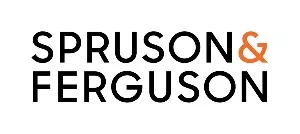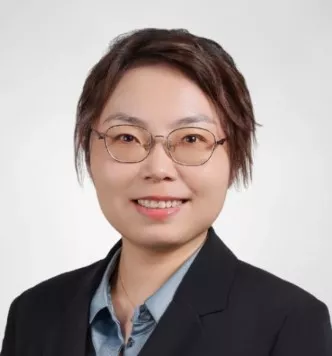- with readers working within the Retail & Leisure industries
- within Privacy and Corporate/Commercial Law topic(s)
- with Senior Company Executives, HR and Finance and Tax Executives
After six months of drafting and revisions, the China National Intellectual Property Administration (CNIPA) issued the finalised version of the Guidelines for Patent Examination on 13 November 2025. These revisions will take effect on 1 January 2026.
The revised Guidelines include significant changes that will affect various aspects of patent prosecutions and patent enforcement going forward. We have already written specifically about the <changes to dual filing and those affecting AI & bitstream innovations. Below we cover the rest of the changes.
Changes related to procedural matters
- Inventor identity information and patent agency responsibilities
- Identity information of all inventors instead of the first inventor as previously required shall be provided in the request form at the time of filing an application, including name, nationality, and ID card number if they are Chinese nationals. An inventor should be a natural person.
- The patent agency shall verify the authenticity of the applicant's identity information and contact details.
- Excess pages fees
Excess pages fees are no longer charged for sequence listings submitted in the prescribed electronic format (currently WIPO Standard ST.26).
This change will reduce excess-page fees regarding biotech patent applications containing sequence listings, thereby significantly easing the financial burden on applicants.
- Expedited examination procedure
Chinese patent applications that have passed the preliminary examination by a local intellectual property protection (IPP) center or a fast IPP service center may be eligible for expedited substantive examination by the CNIPA.
Preliminary examination of a patent is the service provided by local IPP centers or a fast IPP service center for patent applications seeking accelerated examination before formal submission to the CNIPA.
To be eligible, applicants must be enterprises or institutions that meet the relevant industry and regional requirements, and must register in advance with the local IPP center. The applications must fall within the technical fields that are accepted by the local IPP centers for pre-examination.
- Details of applicant and inventor on the Patent Certificate
For national phase applications and divisional applications, the names of the applicants and inventors/designers recorded on a patent certificate should be the names that are provided at the time of filing national phase applications or filing divisional applications.
- Refund of fees
The CNIPA will no longer automatically process refunds in the following circumstances. Instead, the parties concerned can initiate a request for refund:
- The examination fee, where a Chinese patent application is deemed withdrawn, a divisional application is deemed not to have been filed, or a statement to withdraw a Chinese patent application is approved before the issuance of Notification of Entering Substantive Examination Procedure.
- Annuities paid after the patent right has terminated or the decision on declaring the patent right entirely invalid is announced.
- The restoration fee and associated fee if the CNIPA decides to refuse the restoration request.
Changes related to dual-filing approach
When an applicant files an invention patent application and a parallel utility model application on the same day with mutual cross references ('Dual Filing'), the applicant must, upon receiving a notice of allowance for the invention patent, abandon the parallel utility model application in order to have the invention patent granted. Failure to do so will result in rejection of the invention patent application.
This change removes the option of amending the claims of the invention application to differentiate its scope from that of the parallel utility model application as a means of securing both patents.
It should also be noted that where an invention patent is granted through a dual filing strategy and the parallel utility model is abandoned, the granted invention patent will not be eligible for Patent Term Adjustment (PTA) under the new practice.
Detailed comments on such change can be found at China | Patent rules changed for dual filing, abandon utility model for grant of invention patent – Spruson & Ferguson
New scenario for PTA exclusion
Reasonable delays during re-examination proceedings further include the scenario where the Decision of Final Rejection is withdrawn because of filing of new arguments and/or new evidence materials, in addition to filing of amendments as previously prescribed. Accordingly, the time consumed by such reasonable delays will not be credited toward PTA.
Changes related to invalidation proceedings
Eligibility of invalidation petitioners
A request for invalidation will not be accepted if it is not based on true intention of the petitioner.
This amendment reinforces the principles of good faith stipulated in Article 20 of the Chinese Patent Law and its Implementation Rules. A direct impact is the use of "straw man (nickname of a fake petitioner)" option in the invalidation procedure. Nonetheless, detailed criteria for determining the "true intention" remain to be clarified by CNIPA.
Principle of Res Judicata
Once a decision of invalidation has been made, any subsequent invalidation request for invalidation of the same patent on the same or essentially the same grounds and evidence will not be accepted or examined, unless these grounds or evidence were not considered in the issued Decision of Invalidation.
Amendments to claims
When the patentee amends the claims, they shall submit a complete set of replacement claim sheets and a comparison table clearly showing the amendments. If more than one version of amended documents that comply with relevant regulations are submitted within the prescribed time limit, the last-submitted version will be used as the basis for examination.
Plants and plant variety
- The definition of unpatentable "plant variety" is introduced to refer to a plant population that is obtained through artificial selection or is discovered and improved to possesses uniform morphological and biological characteristics or relatively stable genetic traits.
- The plants which belong toscientific discoveries are clarified. Wild plants found in nature that have not been technologically processed and exist in their natural state belong to scientific discoveries as stipulated in Article 25.1(1) of the Patent Law and cannot be granted patent rights. However, wild plants that are artificially bred or modified to have industrial utility do not fall into the category of scientific discovery.
- Patentable plant material is clarified. A plant and its propagating material that is obtained through artificial selection or improvement of a discovered wild plant shall not be considered a "plant variety" provided that the population does not exhibit uniform morphological and biological characteristics or relatively stable genetic traits.
- Transgenic plants produced through biological methods such as recombinant DNA technology are unpatentable if they meet the definition of unpatentable "plant varieties" as defined above.
Inventiveness evaluation
A feature that does not contribute to solving the technical problem objectively addressed by a claimed invention usually does not confer inventiveness, even if it is introduced into the claim.
Example:
For a camera invention, the technical problem to be solved by the invention is to achieve more flexible shutter control. This technical problem is achieved by improving the relevant mechanical and circuit structures inside the camera. To address the inventiveness objection raised by the examiner, the applicant incorporated features including the shape of the camera housing, the size of the display screen, and the position of the battery compartment into the claim. However, the specification does not state that the newly added features have any relevance with the solution of the technical problem. The applicant also did not provide evidence to prove that these features can bring any further technical effects to the claimed technical solution. Therefore, the above technical features do not contribute to the solution of the technical problem and would not bring inventiveness to the claimed technical solution.
How we can help
Our team in Beijing and Hong Kong work closely with clients globally to identify proactive patents strategies and ensure their applications are tailored to China's requirements, and maximise their rights and commercial outcomes.
If you have any specific concerns or questions in relation to regulation of the AI-related application in the Guidelines, please feel free to reach out to us.
The content of this article is intended to provide a general guide to the subject matter. Specialist advice should be sought about your specific circumstances.




